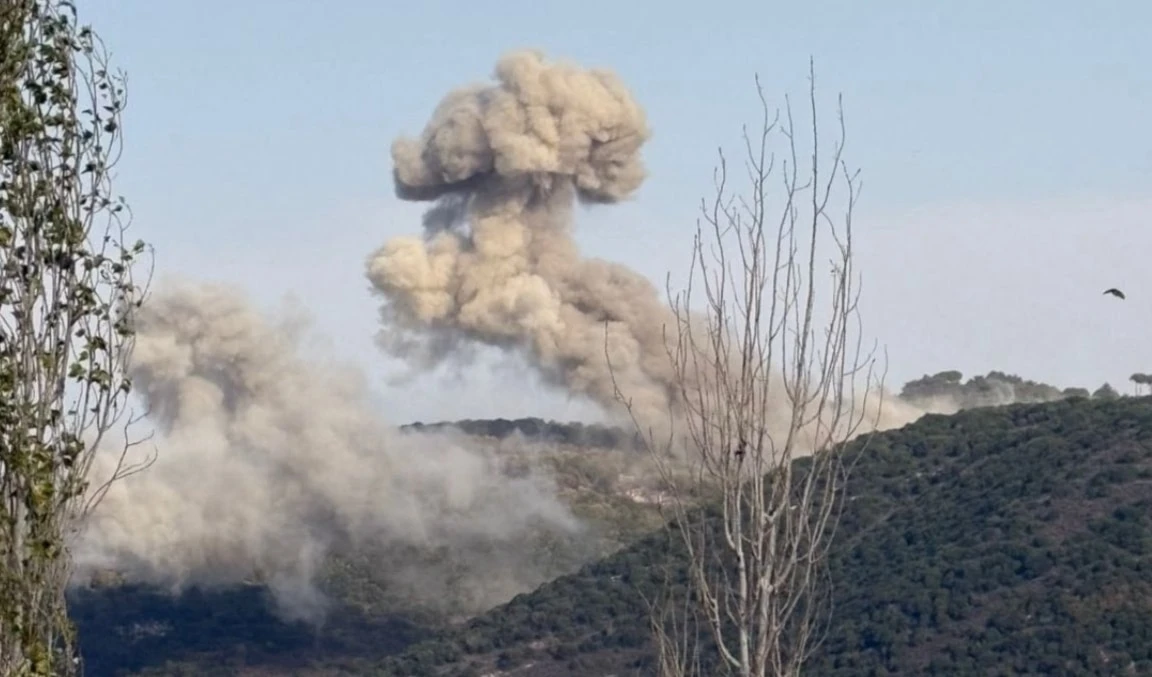Israeli media: Hezbollah could've taken out chief of staff
Israeli media warns that Hezbollah has the geographical upper hand in the north of occupied Palestine.
-

The Israeli chief of staff and the commander of the northern region during a tour of the Al-Abad site, 20 July 2023. (ٍSocial media)
Commenting on the video filmed from the Lebanese village of Hula, Israeli media said the Lebanese Resistance's footage filming the Israeli Chief of Staff Herzi Halevi is "concerning".
The camera lens might have as well been a sniper weapon, Israeli media pointed out.
"Today, Hezbollah has drawn another card, in the game that has been being played in recent weeks on the northern border, and has published a video filming the chief of staff of the Israeli army and the commander of the northern region," Channel 12's correspondent in the north, Guy Faron said.
He added that this is proof of a well-known fact: that is the geographical upper hand of Hezbollah in the North. In the northern region, Hezbollah has surveillance over and the capacity to make a move against the settlers, and not only the Chief of Staff who had arrived on a tour of the fence.
Faron further explained that this was a matter of psychological warfare as if with a message to the Israeli settler society: We have seen the chief of staff and the commander of the northern region and we could have made a move against them if we wanted to.
Earlier today, Al-Manar TV's correspondent in southern Lebanon, Ali Shuaib posted a video on his Twitter account in which he filmed Halevi during his border tour at the Al-Abad site, opposite the southern Lebanese town of Hula, accompanied by the commander of the northern region and the commander of the Galilee Division.
Read more: Hezbollah warns of IOF 'dangerous' actions in occupied Lebanese town
Earlier today it was reported that Lebanon started bulldozing lands adjacent to what is known as the withdrawal line, or the Blue Line, in the Kfar Chouba Heights, the area bordering occupied Palestine.
The bulldozing operations are a precedent for Lebanon, since the liberation of the South and the Western Bekaa from the Israeli occupation, Al Mayadeen's correspondent said, adding that the bulldozing was taking place near the barricades set up by the Israeli occupation a few days ago.
The zones in which the bulldozing took place have not seen Lebanese people set foot there since the 1970s.
As the bulldozing took place, the Lebanese Army reinforced its positions on the border area amid a heightened state of alert on either side of the border.
"We will bulldoze a new road near the occupation's barricades to facilitate the transportation of civilians to the Baathiel pond," Kfar Chouba Mayor Qassem Al-Kadiri told Al Mayadeen.
"The bulldozing is taking place on land that we have not been to in decades. What is happening today is of great importance, and it is time for us to be on our soil. It is surprising how some say this is not Lebanese territory," Al-Kadiri underlined.
"We are proud and content with the return of our territories. The Shebaa Farms and the Kfar Chouba Heights are included in UNSC resolution 425," the town's mayor said, referencing the clause calling for "strict respect for the territorial integrity, sovereignty and political independence of Lebanon within its internationally recognized boundaries."
Lebanese citizens from the town told Al Mayadeen about the situation there, saying they had the right to work on their soil and underlying that they were "not afraid of the occupation due to the Army, Resistance, and people."
The Israeli occupation forces, in response to the Lebanese bulldozing operations, fired smoke bombs toward the Lebanese territories off the occupied Kfar Shuba heights, with an Israeli tank moving from the Ruwaisat Al-Alam site as the bulldozing operations were taking place, Al Mayadeen's correspondent reported.
The occupation also started mobilizing its forces meters away from the bulldozing works alongside the border after it had erected barricades in the area on Tuesday evening, beyond the withdrawal line, in clear violation of UN resolutions regarding the respect of Lebanon's sovereignty.
Read more: 'Israel' targets area between Kfar Chouba and Kfar Hamam in S. Lebanon

 4 Min Read
4 Min Read










